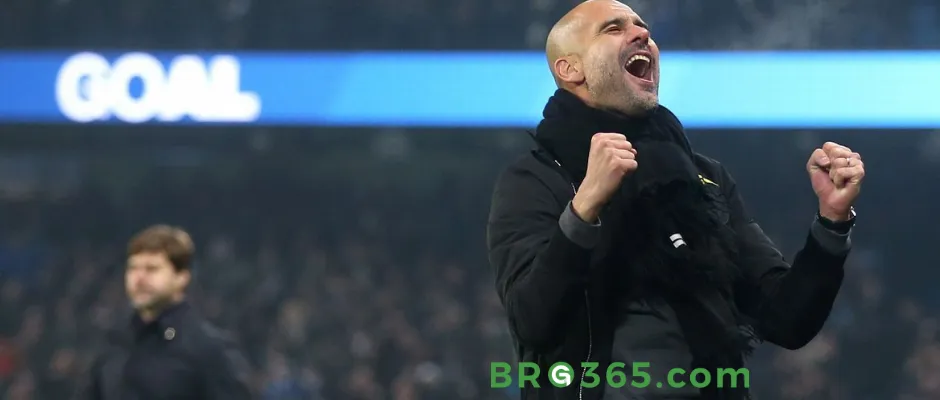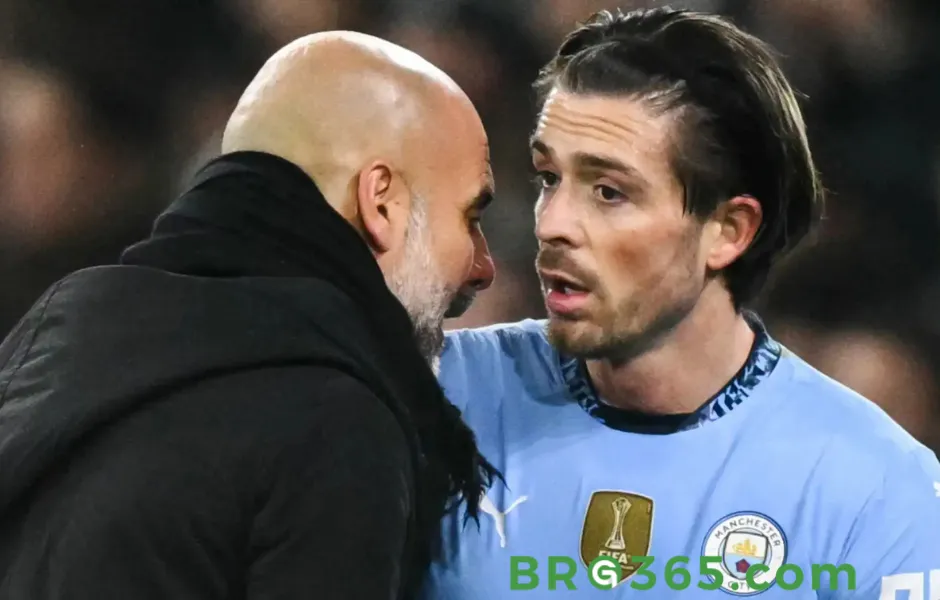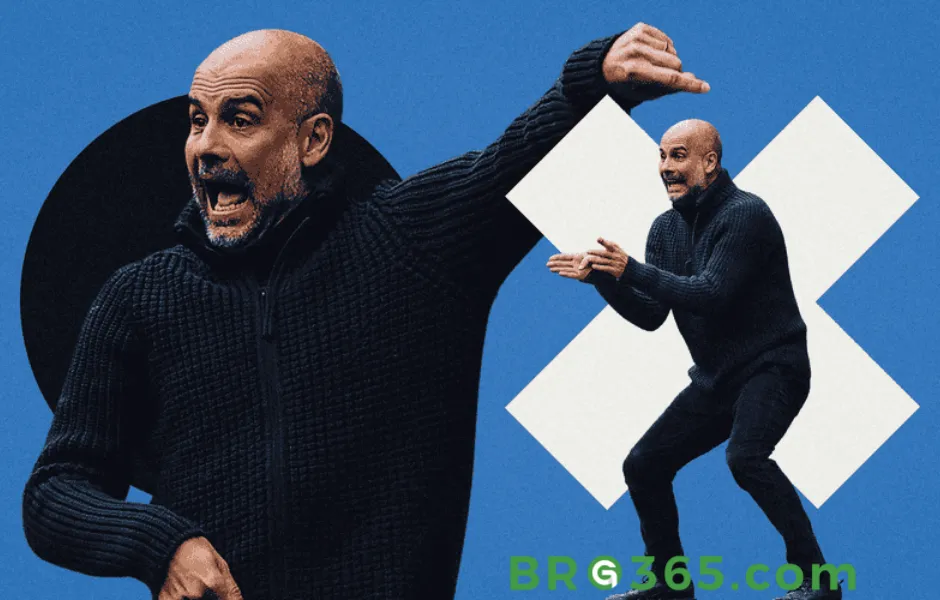Pep Guardiola’s influence at Manchester City has transformed the Premier League landscape with tactical brilliance and a focus on player development.
We will dive into how Guardiola’s strategic innovations and unique player moments have redefined City’s game.
Follow BRG365 for more in-depth football tactics.

Tactical Maestro’s 2025 Flashpoints
Pep Guardiola’s influence on football remains unmatched, with his teams consistently pushing tactical boundaries.
His 2025 decisions have sparked both acclaim and debate:
FA Cup Final Controversy
His “no.8 experiment” in the 0-1 defeat to Crystal Palace (78% possession, 23 shots without a goal) reignited discussions about balancing attack and defense.
League Semi-Final Masterclass
Against Real Madrid, Guardiola deployed a dynamic 3-2-4-1 formation, using Rodri’s defensive solidity and Kevin De Bruyne’s creativity to dominate midfield.
Premier League Flexibility
In a 3-1 win over Liverpool, he abandoned traditional tiki-taka for direct transitions and set-piece precision, showcasing adaptability.
Tactical Adjustments and Player Roles
Kevin De Bruyne
-
Tactical Role: Operating as a deep-lying playmaker, De Bruyne orchestrates attacks with his exceptional vision and passing range.
Rodri
-
Tactical Role: As the single pivot in midfield, Rodri provides defensive stability and transitions play from defense to attack.
Phil Foden
-
Tactical Role: Foden's versatility allows him to operate in various attacking positions, contributing both goals and assists.
Erling Haaland
-
Tactical Role: As the central striker, Haaland's primary responsibility is to finish chances and apply pressure on opposing defenses.
João Cancelo
-
Tactical Role: Operating as an inverted full-back, Cancelo contributes to midfield overloads and provides width in attacks.
Read More: Man City Standings-How Chart the Bluemoon's Journey to Greatness?
Historical Evolution
Guardiola’s tactical journey reflects his philosophy of constant reinvention:
Barcelona (2008-2012)
Tiki-Taka Peak: With Xavi, Iniesta, and Messi, his teams averaged 68% possession, redefining positional play.
False Nine Tactic: Messi’s role as a false nine dismantled defenses, memorably in the 2009 Champions League final vs. Manchester United.
Bayern Munich (2013-2016)
Three-at-the-Back System: Philipp Lahm’s shift to defensive midfield and aggressive pressing transformed German football.
Manchester City (2016-Present)
Dynamic Midfield: Rodri’s single-pivot role and inverted fullbacks (e.g., João Cancelo) pioneered positional fluidity.
Data-Driven Approach: AI models now analyze opponent weaknesses, such as targeting Paris Saint-Germain’s right flank in the 2025 Champions League.
A Comparative Overview
|
Season |
Formation |
Key Tactical Features |
|---|---|---|
|
Barcelona |
4-3-3 |
Positional play, false nine, high possession |
|
Bayern |
3-4-3 |
High pressing, inverted full-backs, flexibility |
|
Manchester City |
3-2-2-3 |
Hybrid roles, inverted full-backs, cautious full-backs |
2025 Key Innovations

Reinventing Possession-Based Football
Final Third Efficiency: Average passes per match dropped by 12%, but touches in the attacking third increased by 18%.
Long-Ball Precision: Against Nottingham Forest, a 62% long-pass success rate created three clear chances.
Positional Rotations
Dynamic Roles: Bernardo Silva’s ability to drop into defense creates an “elastic midfield” to counter high pressing.
Inverted Fullbacks: Cancelo’s 34 progressive passes per 90 (Opta) highlight fullbacks’ roles in midfield orchestration.
High Pressing
Pressing Triggers: In the 2025 Champions League vs. Real Madrid, City won 14 turnovers in the final third, leading to five shots.
AI Injury Prevention: State-of-the-art monitoring reduced key player injuries by 18%, keeping the team competitive without Rodri.
Creating Attacking Spaces
Half-Space Exploitation: De Bruyne’s 2.1 big chances created per 90 in the Premier League led all midfielders.
Winger Inversions: Phil Foden’s 38% shot conversion rate from central positions became vital against low blocks.
Case Study- Tactical Setup vs. Real Madrid
-
Three Center-Backs: Rúben Dias, Manuel Akanji, and Josko Gvardiol nullified Vinícius Júnior’s pace.
-
Double Pivot: Rodri (3.2 interceptions per 90) anchored defense, while De Bruyne (82% long-pass accuracy) dictated attack.
-
Front Four: Erling Haaland as a target man, with Foden, Julián Álvarez, and Silva rotating to create chaos.
Statistical Dominance
-
Possession: 65% Ball Possession,28 shots (10 on target).
-
Defensive Resilience: 21 successful interceptions, neutralizing 12 Madrid counterattacks.
Pep Guardiola’s Manchester City has set a new tactical standard in the Premier League. Other clubs have tried to emulate the fluidity and pressing intensity Guardiola demands.
His teams average 68% possession per game and win around 25 high pressing duels per match, showcasing the effectiveness of his strategy.
Influence on Modern Football
Tactical Benchmark: Jurgen Klopp’s gegenpressing and Carlo Ancelotti’s midfield structures bear Guardiola’s imprint.
Player Development: Álvarez’s transformation from winger to false nine showcases the system’s ability to reinvent roles.
Criticisms and Challenges
-
Defensive Gaps: In the FA Cup final, midfield interception success fell to 61%, with Crystal Palace converting 67% of counterattacks.
-
Rotation Debates: €60m signing Nico González’s minimal use in key games (2 minutes in the final) raised questions about squad integration.
What’s Next for Guardiola?

-
Hybrid Formations: A potential “4-3-3+single pivot” system to balance possession and defensive solidity.
-
Youth Integration: Prospects like Shea O’Riley (1 goal, 2 clearances on debut vs. Everton) may become future tactical pillars.
-
AI-Driven Adjustments: Real-time tactical shifts via AI could debut in 2026, adapting to opponents’ formations mid-game.
Pep Guardiola’s 2025 tactics embody his unique blend of historical reverence and forward-thinking innovation.
From tiki-taka’s origins to AI-powered rotations, his legacy is defined by relentless evolution.
While the FA Cup defeat highlighted vulnerabilities, his Champions League semi-final masterclass proved he remains football’s ultimate innovator.
As City prepares for a 2026 rebuild, Guardiola’s next tactical chapter will undoubtedly shape the sport’s future.
Also Read: Pep Guardiola’s strange tactics hindered Manchester City in the FA Cup final
